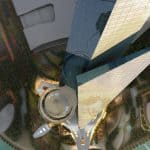
The Kingdom Tower desert construction site in January 2015. Currently the $1.2bn Kingdom Tower is an isolated, 15-storey hulk of concrete in the desert beside the Red Sea The Kingdom Tower has not been linked with any abuse cases, and hopefully lessons have been learned from other projects in the region.Īsked if there would be separate entrances and circulation zones for men and women, as in many Saudi public buildings, Smith replies that “the Kingdom Tower is a true mixed-use tower, and it will have four separate entrances based on function, not gender” – just like London’s Shard. Across the Gulf states, the construction industry relies on migrant labour, and low pay and harsh conditions have been well documented. Since 2013, according to Human Rights Watch, Saudi Arabia has been conducting mass expulsions of its migrant workers. But what about those who can’t afford it, such as the migrant workers that built Kingdom City in the first place?

The complex’s open spaces will probably bustle, because everyone will have money and time to spend there. Saudis escape their ultra-conservative regime by holidaying in such places, and Hammoud wants some of that vacation wealth to stay at home. Mounib Hammoud, CEO of the Jeddah Economic Company, the project’s developers, told that Kingdom City will “position the city of Jeddah on the international scene of modern regional cities, alongside the downtown of Beirut and Downtown Dubai”. Jeddah is often described as a relatively liberal counterpoint to Saudi Arabia’s conservative capital, Riyadh. Right now, the $1.2 billion Kingdom Tower is an isolated, fortress-like hulk of concrete, standing about 15 storeys tall in the forbidding desert landscape beside the Red Sea, separated by Abhur Bay from the city centre 15 miles to the south. Smith says they expect 3 million visitors a year – some delivered by the planned new metro system, the stations of which Norman Foster’s practice is tipped to design. The buildings encircling the Kingdom Tower will rise from 20 storeys (for those nearest) to 60 storeys, so everyone in them should get a good view. Kingdom City, designed by Adrian Smith and Gordon Gill Architecture (AS+GG), recycles the Burj’s planning formula down to the surrounding moat and towers – only bigger.

The Burj is popular too, its observation deck attracting almost 2 million visitors a year. That’s unfair in the case of Smith’s tallest towers – while working for SOM, he designed the Burj Khalifa, whose shape follows from the Hymenocallis desert flower, with setbacks evoking spiralling minarets.

One result of that was buildings Gehl refers to as “birdshit architecture - the starchitects fly in, fly out, and drop some buildings here and there with no context”. In 2010 he told a Melbourne audience that modernist planners had “left the ground and the people dimension in planning, and started to fly over the whole thing, planning from a distance”. The Danish urbanist Jan Gehl, an evangelist for human-scaled cities, has roundly condemned this approach in books such as Cities for People. This century, the high-rise masterplan has resurfaced in the petrodollar-fuelled cities of the Gulf states, giving rise to zoos of bizarre towers bordered by freeways in a syndrome the Qatari-based writer and artist Sophia Al Maria calls “gulf futurism”.

The tower will be the centrepiece of the $20bn Kingdom City.


 0 kommentar(er)
0 kommentar(er)
